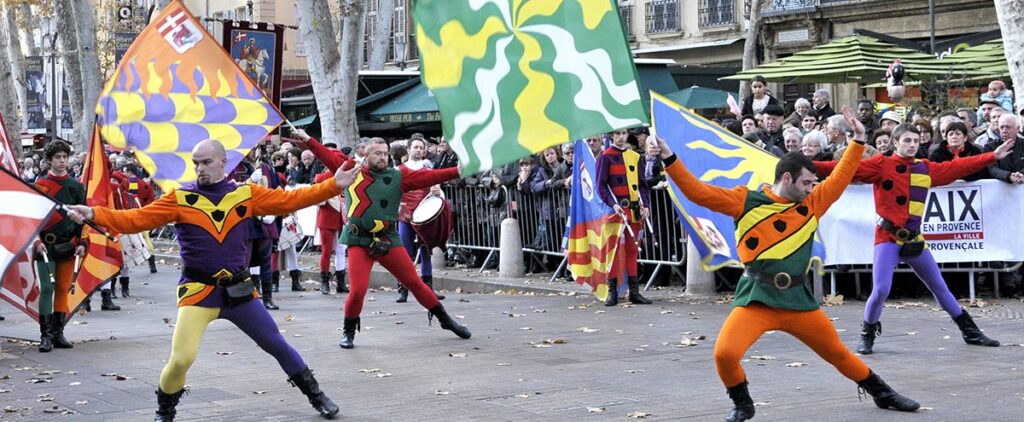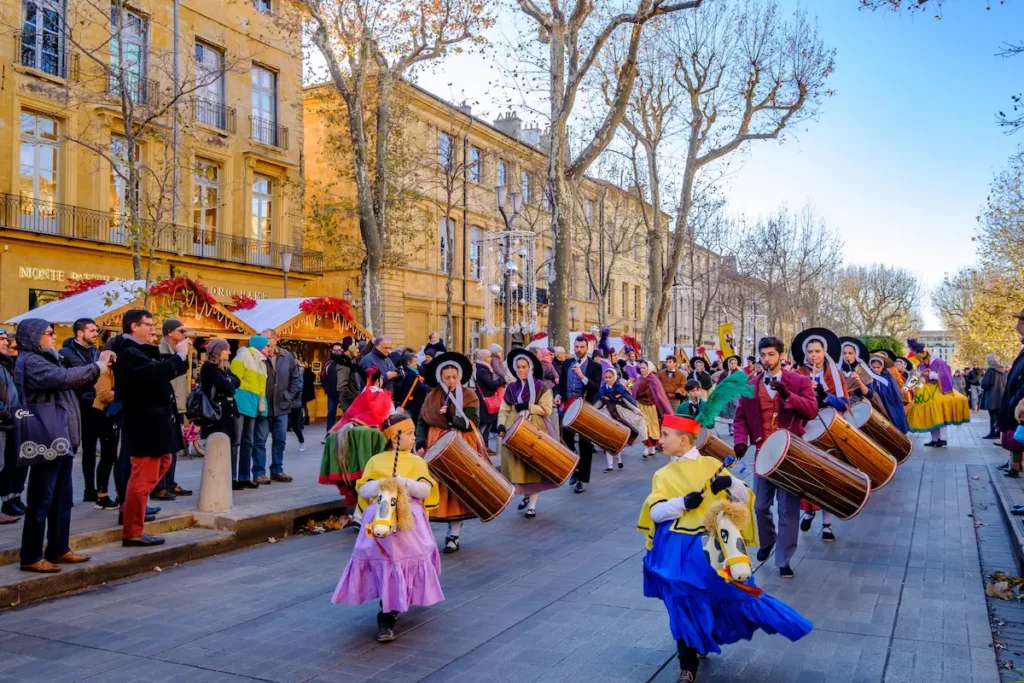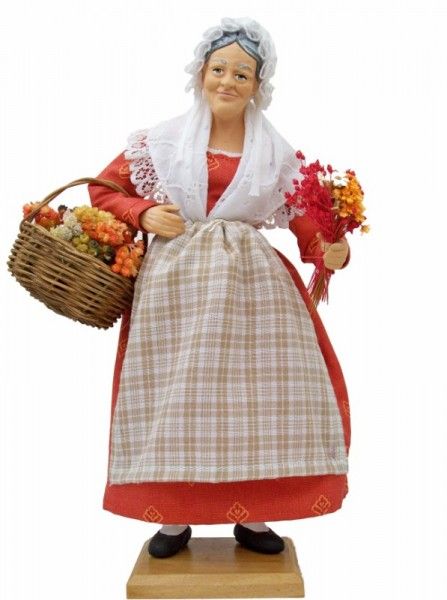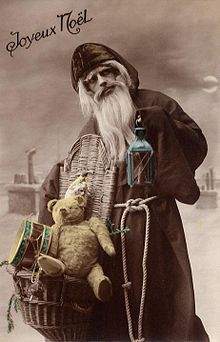
Provence shares many Christmas traditions with the rest of France, like sapins de Noël (Christmas trees) and Père Noël (Father Christmas.) But it also has some unique ones of its own.
One is the santons, those cute little figurines sold all over Provence. They depict characters from village life such as the baker, the fishwife and the scissor grinder. They are popular with tourists, kind of like Hummel figurines but with a French twist. And their origin goes back to the French Revolution.
Crèches (nativity scenes) had long been popular in France but were banned by the fiercely anti-clerical leaders of the Revolution. What to do? An artist from Marseille came up with a clever solution. He invented santons and turned the crèche into a “village scene,” using his little figurines in place of the usual Biblical characters. This passed muster with the anti-religious zealots, who somehow missed the fact that santon means “little saint,” and a new tradition was born.
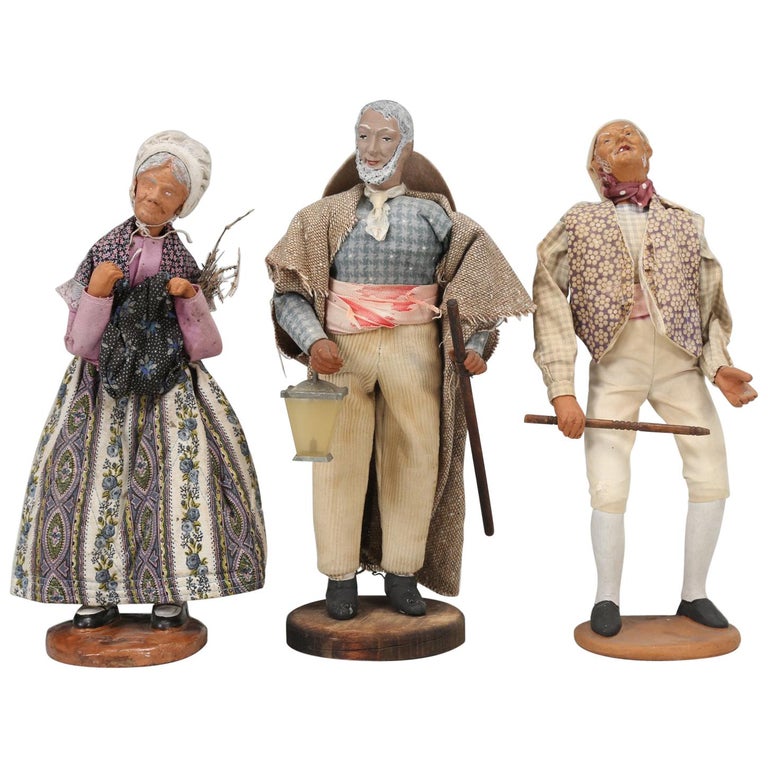
Another Provencal Christmas specialty is le gros souper (the big dinner) eaten before midnight Mass on Christmas Eve. It is full of religious symbolism, like the three white tablecloths representing the holy trinity and the seven dishes representing Mary’s sorrows. It also requires a great deal of preparation, so fewer families today have this big dinner than in years past.
Perhaps the most famous Provence Christmas tradition is the treize (thirteen) desserts. Wait, thirteen? Yes!
These are eaten after midnight Mass, which means in the wee hours of Christmas—what a great way to start the day! Like the gros souper, the treize desserts are full of religious symbolism. Thirteen, for example, represents the number of people at the Last Supper.
Each family can decide what to serve but the desserts usually include fruits and nuts, candies and some sort of sweetened bread. My favorites are the two kinds of nougat, one white and one black, symbolizing good and evil.
Like the gros souper, fewer families prepare the treize desserts today than in the past but they maintain a loyal following. Some people just skip the dinner and the Mass and go straight to the desserts!
So at your Christmas dinner this year, when you are debating whether to have another slice of pie—go for it! Just tell your family that you are taking part in an ancient and noble French tradition.
